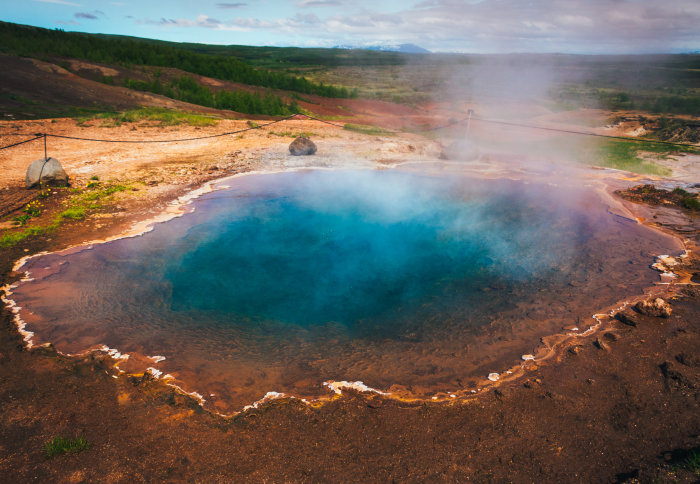Strange bacteria hint at ancient origin of photosynthesis

Structures inside rare bacteria are similar to those that power photosynthesis in plants today, suggesting the process is older than assumed.
The finding could mean the evolution of photosynthesis needs a rethink, turning traditional ideas on their head.
We’re beginning to see that much of the established story about the evolution of photosynthesis is not supported by the real data Dr Tanai Cardona
Photosynthesis is the ability to use the Sun’s energy to produce sugars via chemical reactions. Plants, algae, and some bacteria today perform ‘oxygenic’ photosynthesis, which splits water into oxygen and hydrogen to power the process, releasing oxygen as a waste product.
Some bacteria instead perform ‘anoxygenic’ photosynthesis, a version that uses molecules other than water to power the process and does not release oxygen.
Scientists have always assumed that anoxygenic photosynthesis is more ‘primitive’, and that oxygenic photosynthesis evolved from it. Under this view, anoxygenic photosynthesis emerged about 3.5 billion years ago and oxygenic photosynthesis evolved a billion years later.
However, by analysing structures inside an ancient type of bacteria, Imperial College London researchers have suggested that a key step in oxygenic photosynthesis may have already been possible a billion years before commonly thought.
The new research is published in the journal Trends in Plant Science.
Challenging the established story
Lead author of the study, Dr Tanai Cardona from the Department of Life Sciences at Imperial, said: “We’re beginning to see that much of the established story about the evolution of photosynthesis is not supported by the real data we obtain about the structure and functioning of early bacterial photosynthesis systems.”
The bacteria they studied, Heliobacterium modesticaldum, is found around hot springs, soils and waterlogged fields, where it performs anoxygenic photosynthesis. It is very distantly related to cyanobacteria, the main bacteria that perform oxygenic photosynthesis today.
It is so distantly related that it last had a ‘common ancestor’ with cyanobacteria billions of years ago. This means that any traits the two bacteria share are likely to also have been present in the ancient bacteria that gave rise to them both.
By analysing the structures that both H. modesticaldum and modern cyanobacteria use to perform their different types of photosynthesis, Dr Cardona found striking similarities.
Both structures contain a site that cyanobacteria and plants exclusively use to split water – the first crucial step in oxygenic photosynthesis.
Change of perspective required
The evolution of cyanobacteria is usually assumed to also be the first appearance of oxygenic photosynthesis, but the fact that H. modesticaldum contains a similar site means that the building blocks for oxygenic photosynthesis are likely much more ancient than thought, as old as photosynthesis itself, and therefore could have arisen much earlier in Earth’s history.
Dr Cardona also suggests that this might mean oxygenic photosynthesis was not the product of a billion years of evolution from anoxygenic photosynthesis, but could have been a trait that evolved much sooner, if not first.
Dr Cardona said: “This result helps explain in fantastic detail why the systems responsible for photosynthesis and oxygen production are the way they are today – but for it to make sense it requires a change of perspective in the way we view the evolution of photosynthesis.
“Under the traditional view – that anoxygenic photosynthesis evolved first and was the only type for about a billion years or more before oxygenic photosynthesis evolved – these structures should not exist at all in this type of bacteria.”
The work was funded by the Leverhulme Trust and the Biotechnology and Biological Sciences Research Council.
-
‘Evolution of Photochemical Reaction Centres: More Twists?’ by Tanai Cardona and A. William Rutherford is published in Trends in Plant Science.
Top image credit: mehdimido / Shutterstock
Article supporters
Article text (excluding photos or graphics) © Imperial College London.
Photos and graphics subject to third party copyright used with permission or © Imperial College London.
Reporter
Hayley Dunning
Communications Division